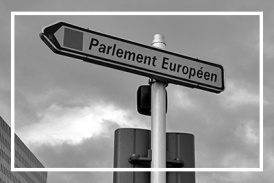Hemali Dalal of Form + Fire Publishes Analysis on Floating Diamond Jewelry Trends
Jewelry critic Hemali Dalal breaks down floating diamond styles, revealing how to achieve the illusion while protecting your center stone.
In her latest article for Form + Fire, Dalal explores how floating looks are achieved, and what buyers should know before investing in them. With 15+ years in high jewelry design and international accolades for innovation and craftsmanship, Dalal brings an engineering-first lens to the conversation.
The feature outlines three common techniques behind the “floating” effect:
Under galleries that lift the diamond above the band with minimal visible metal
Hidden halo frameworks that offer light reflection and height without obvious structure
Slim prong tension settings that reduce metal for openness—but with limited grip
Dalal emphasizes that while these designs are beautiful, buyers must be cautious. Without adequate support, diamonds can loosen over time, and ultra-thin prongs wear down quickly—especially in daily-wear rings.
The article offers guidance on how to maintain the illusion safely:
Choose settings with reinforced prongs or hidden rails underneath the stone
Look for cathedral shoulders that add support without interrupting the silhouette
Ask whether the ring can be serviced or re-tightened over time
Dalal notes that true luxury comes not from visual tricks, but from thoughtful execution. The floating aesthetic should never compromise the function of the setting.
Hemali Dalal is a jewelry critic and former high jewelry designer with over 15 years of industry experience. She has earned top design placements from the World Gold Council and De Beers, and her work centers on evaluating the intersection of structure, beauty, and craftsmanship in luxury jewelry.
This article is part of Form + Fire’s structural jewelry series—highlighting how materials, settings, and engineering define the long-term value of high jewelry. Features from the site are also distributed across national media including MarketWatch and FOX affiliates.
Hemali Dalal
Form + Fire
email us here
Legal Disclaimer:
EIN Presswire provides this news content "as is" without warranty of any kind. We do not accept any responsibility or liability for the accuracy, content, images, videos, licenses, completeness, legality, or reliability of the information contained in this article. If you have any complaints or copyright issues related to this article, kindly contact the author above.
Films, legislative advocacy and more: Period Poverty Awareness Week (May 12 - 18, 2025) raises issue, inspires action
Clearing the air: microbial biofilters offer low-cost methane mitigation
Mind the Gap: Study Reveals Disconnect Between Radon Awareness and Mitigation in Sweden
Kalendarium
Więcej ważnych informacji
 Jedynka Newserii
Jedynka Newserii

 Jedynka Newserii
Jedynka Newserii

Edukacja

Coraz więcej Polaków widzi korzyści płynące z obecności w UE. Co ósmy wciąż jednak nie potrafi ich wskazać
Członkostwo w UE cieszy się wśród Europejczyków rekordowo wysokim poparciem – wynika z tegorocznego Eurobarometru. Korzyści dla swojego kraju dostrzega 74 proc. obywateli Unii – to odsetek najlepszy od początku badań w 1983 roku. A w Polsce jest on jeszcze wyższy. Doceniamy przede wszystkim wkład UE w bezpieczeństwo, nowe możliwości zawodowe i rozwój gospodarczy kraju. Po 21 latach naszej obecności w UE wciąż jednak potrzebna jest europejska edukacja.
Polityka
Zmiany w obowiązku magazynowania gazu mogą obniżyć ceny surowca. To pomoże się przygotować do sezonu zimowego

Elastyczność bez zagrożenia dla bezpieczeństwa energetycznego – tak nową propozycję przepisów dotyczących uzupełniania zapasów gazu przed sezonem zimowym określają jej inicjatorzy z Parlamentu Europejskiego. Europosłowie proponują nieznaczne zmniejszenie wymaganego poziomu zapełnienia magazynów i rozciągnięcie w czasie terminu, w którym trzeba spełnić ten obowiązek. Jak podkreśla Borys Budka, ma to zapobiec spekulacjom na rynku gazu i tym samym pomóc obniżyć ceny surowca.
Konsument
Możliwość zakupu online może zachęcić kolejne grupy Polaków do ubezpieczeń zdrowotnych. Dziś korzysta z nich już prawie 5,5 mln osób

Polska jest jednym z liderów Europy w obszarze cyfryzacji sektora usług medycznych. Świadczą o tym m.in. popularność elektronicznych narzędzi zapewniających dostęp do danych zdrowotnych, e-recept czy wirtualna diagnostyka. Polacy są też otwarci na innowacje w zakresie ubezpieczeń zdrowotnych, z których korzysta już blisko 5,5 mln osób. Za pomocą nowej cyfrowej platformy Medicover chce zachęcić klientów do samodzielnej konfiguracji i zakupu polis online.
Partner serwisu
Szkolenia

Akademia Newserii
Akademia Newserii to projekt, w ramach którego najlepsi polscy dziennikarze biznesowi, giełdowi oraz lifestylowi, a także szkoleniowcy z wieloletnim doświadczeniem dzielą się swoją wiedzą nt. pracy z mediami.







.gif)

 |
| |
| |
|